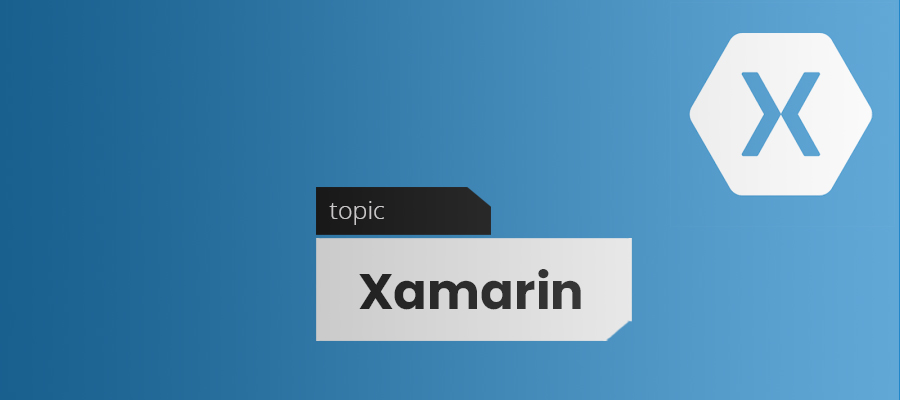Xamarin is a Microsoft-owned San Francisco-based software company founded in May 2011 by the engineers that created Mono, Mono for Android and Mono-Touch, which are cross-platform implementations of the Common Language Infrastructure (CLI) and Common Language Specifications (often called Microsoft .NET).
With a C#-shared code-base, developers can use Xamarin tools to write native Android, iOS, and Windows apps with native user interfaces and share code across multiple platforms, including Windows and macOS. According to Xamarin, over 1.4 million developers were using Xamarin’s products in 120 countries around the world as of April 2017.
On May 16, 2011, Miguel de Icaza announced on his blog that Mono would be developed and supported by Xamarin, a newly formed company that planned to release a new suite of mobile products. According to de Icaza, at least part of the original Mono team had moved to the new company.
The name Xamarin comes from the name of the Tamarin monkey, replacing the leading T with an X. This is in line with the naming theme used ever since Ximian was started.
After Xamarin was announced, the future of the project was questioned, since MonoTouch and Mono for Android would now be in direct competition with the existing commercial offerings owned by Attachmate. It was not known at that time how Xamarin would prove they had not illegally used technologies previously developed when they were employed by Novell for the same work.
In July 2011, however, Novell – now a subsidiary of Attachmate – and Xamarin announced that Novell had granted a perpetual license for Mono, MonoTouch and Mono for Android to Xamarin, which formally and legally took official stewardship of the project.
In December 2012, Xamarin released Xamarin.Mac, a plugin for the existing MonoDevelop Integrated development environment (IDE), which allows developers to build C#-based applications for the Apple’s macOS operating system and package them for publishing via the App Store.
In February 2013, Xamarin announced the release of Xamarin 2.0. The release included two main components: Xamarin Studio, a re-branding of its open-source IDE Monodevelop; and integration with Visual Studio, Microsoft’s IDE for the .NET Framework, allowing Visual Studio to be used for creating applications for Android and iOS, as well as for Windows.
Xamarin 2.0 was released in February 2013 Xamarin.Android and Xamarin.iOS that make it possible to do native Android, iOS, and Windows development in C#, with either Visual Studio or Xamarin Studio. Developers re-use their existing C# code, and share significant code across device platforms. The product was used to make apps for several well-known companies including 3M, AT&T, and HP. Xamarin integrates with Visual Studio, Microsoft’s IDE for the .NET Framework, extending Visual Studio for Android and iOS development. Xamarin also released a component store to integrate backend systems, 3rd party libraries, cloud services and UI controls directly into mobile apps.
Xamarin.Forms:
Introduced in Xamarin 3 on May 28, 2014 and allows one to use portable controls subsets that are mapped to native controls of Android, iOS and Windows Phone.
Xamarin Test Cloud:
Xamarin Test Cloud makes it possible to test mobile apps written in any language on real, non-jailbroken devices in the cloud. Xamarin Test Cloud uses object-based UI testing to simulate real user interactions.
Xamarin for Visual Studio:
Xamarin claims to be the only IDE that allows for native Android, iOS and Windows app development within Microsoft Visual Studio. Xamarin supplies add-ins to Microsoft Visual Studio that allows developers to build Android, iOS, and Windows apps within the IDE using code completion and Intelli-Sense. Xamarin for Visual Studio also has extensions within Microsoft Visual Studio that provide support for the building, deploying, and debugging of apps on a simulator or a device. In late 2013, Xamarin and Microsoft announced a partnership that included further technical integration and customer programs to make it possible for their joint developer bases to build for all mobile platforms. In addition, Xamarin now includes support for Microsoft Portable Class Libraries and most C# 5.0 features such as async/await. CEO and co-founder of Xamarin, Nat Friedman, announced the alliance at the launch of Visual Studio 2013 in New York.
On March 31, 2016 Microsoft announced that they were merging all of Xamarin’s software with every version of Microsoft Visual Studio including Visual Studio Community, and this added various Xamarin features to come pre-installed in Visual Studio such as an iOS emulator.
The above is a brief about Xamarin. Watch this space for more updates on the latest trends in Technology.
